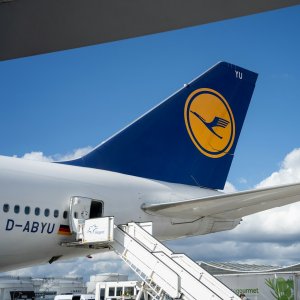
Airline, Airport Synergies Lead to Growth
 By Miriam Bello | Senior Journalist and Industry Analyst -
Thu, 04/28/2022 - 14:09
By Miriam Bello | Senior Journalist and Industry Analyst -
Thu, 04/28/2022 - 14:09
For the past two years, Mexico’s aerospace and aviation sectors have focused on recovering activity flows and economic stability after the COVID-19 pandemic. Now, the industry has shifted its goals and is also striving to advance its sustainability plans and improve passenger experience to continue to be one of the main means of transportation for both passenger and cargo. Airlines and airports are two of the main points on which the development of the Mexican aerospace industry hinges.
Sustained efforts on traffic recovery have shown new industry trends regarding passenger behavior. “We used to have 23 million passengers on domestic and business traffic and, while the first segment is back up, the second has taken the longest to recover,” said Ricardo Dueñas, Director General, Grupo OMA.
“Trips to visit family and friends and tourism travel have been the fastest areas to recover. We saw the first indicators in 2020 but industrial business flights did not take off until 2022. Just recently, Grupo OMA experienced a 90 percent growth in this type of flights, but this occurred two years after the COVID-19 outbreak,” said Dueñas.
Passenger behaviors also changed hygiene measures and airport practices regarding in-person contact between clients and staff, which led to the adoption of measures to best fit the passengers’ needs, Dueñas explained. These measures also respond to the sector’s long-time goal to increase air travel in Mexico, an objective that has been greatly advanced by the country’s ultra-low-cost airlines. These airlines have greatly boosted local tourism to the point that they are now being recognized internationally for their achievements in the sector. “As Mexico’s middle class grows and the population pyramid has more people old enough to travel, these passenger flows are expected to grow. And so will airport capacity,” said Dueñas.
The increase in traffic is increasing pressure in the already oversaturated Mexico City International Airport (AICM). This airport’s oversaturation was one of the main reasons behind the construction of Mexico City’s new airport: Felipe Ángeles International Airport (AIFA). While new, the airport “is trying to work jointly with airlines through incentives that keep fares low and increase airport accessibility,” said Coronel Alain Solana, Operations Deputy General Manager, AIFA. To avoid traffic disruptions, AIFA aims to offer the right domestic connections that reduce travel time and provide greater security to operators.
To achieve the right operation and management, investment is fundamental. “Grupo OMA, for example, is investing to decentralize traffic and make the airport in Monterrey a hub to avoid forced layovers in the center of the country,” Dueñas said.
The National Metrology Center (CENAM) has been implementing a metropolitan airspace modernization project that aims to improve the area’s operation capabilities by 50 percent. “For airports such as the Queretaro Intercontinental Airport (AIQ), this measure aims to increase their capacity from 32 flights per hour to 48 per hour,” said Jorge Gutiérrez de Velasco, Director General, AIQ.
Improving traffic at the metropolitan area will also require investing in novel industry trends such as ambulatory flights, special airport wings for low-cost airlines and the adoption of tech to have less interaction between passengers and to provide a more direct travel experience. Infrastructure wise, investment in runways, platforms and pavements for the new generation of aircraft are among the top priorities.
Air cargo is another significant attractor of investment and cooperation between airlines and airports. “The COVID-19 pandemic drastically shifted freight traffic. E-commerce became a main source of product acquisition and this changed supply chains,” said Gutiérrez. AIQ saw its best year for cargo in 2021 and this year, the airport has been growing for five months in a row.
But growth and reconfiguration also implies securing fuel sources. The fuel provider of choice in Mexico is the Network of Airports and Auxiliary Services (ASA Network), which is currently prioritizing five of the large airports of its network. These include Puebla, where cargo in 2022 experienced a 280 percent growth compared to the same period last year. Puerto Escondido, Tepic, Colima and Ciudad del Carmen are also working to improve aircraft processing capacity.
ASA is working with Grupo OMA, AIFA and AIQ to review their fuel systems. “With OMA, we are looking to extend the hydrant network for a better volume capacity in the airport in Monterrey. AIQ has grown significantly so we have to improve its fuel storage capacity,” said Mauricio Arellano Villavicencio, Director of the Fuels Division, ASA. The growth of these airports has driven ASA to acquire fuel supply vehicles to align to airport requirements and the operational reality of the country.
A common concern for all airports in the country is sustainability but newer airports such as AIFA have an advantage as they were built with clean energy in mind. “We have solar farms and cogeneration plants that reduce emissions,” said Coronel Solana. AIQ is also investing in sustainability and aims to reduce its carbon footprint through solar energy farms and wind energy. “The long-term vision of AIQ is to always coexist with the environment,” said Gutiérrez.
Both airports and airlines have to align their needs and processes to respond correctly to changes in the industry. “The big task we have as an industry is to democratize flights. Mexico has one the most sophisticated fleet of luxury buses in the world, which has inhibited the penetration of our services,” said Carlos Campillo, Partner, Alegre, Calderón & Márquez Abogados SC. However, “if the aviation industry continues to excel in passenger experience and operation management, we could continue strengthening the aviation industry.”
















